Quick Start
Welcome to the Aleo Quickstart. This quickstart will guide you through the core concepts of building on Aleo. You will be guided through the process of deploying and interacting with your own Aleo program directly on the web via the Leo Playground.
What You'll Learn
- Aleo Accounts: Learn how to create an Aleo account and create private and public data.
- Aleo Programs: Learn how to interact with the Aleo network by deploying and executing your own program.
- Private and Public State: Learn how to manage both private and public data on Aleo in order to create privacy preserving apps.
1. Generate a New Aleo Account
The first step in building on Aleo is to create an Aleo account. An Aleo account is a unique identifier that allows you to interact with the Aleo network. With it you can execute program functions, create your own private and public data, and deploy new programs. You can create an account using the Leo Playground or by using one of the ecosystem wallets.
1.1 Using the Leo Playground Widget
Click on the Account Widget to generate a new Aleo Account.
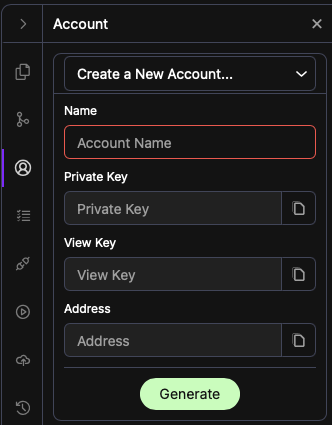
Save your Address, View Key, and Private Key in a safe place, you'll need them later.
1.2 Using an Ecosystem Wallet
An account can be created using one of the wallets below. After installing any of the wallets below, you will be prompted to create an Aleo account.
2. Seed Your Wallet With Testnet Credits
2.1 Get Credits from an Ecosystem Faucet
To seed your wallet, you can request from the official faucet https://faucet.aleo.org/.
The credits received from the faucet will be public credits, which means they are publicly visible on the Aleo network.
2.2 Verify Receipt of Your Testnet Credits
After receiving a successful confirmation from one of the faucets above, you can check your account balance by selecting
Get Account Balance from the list of options in the query widget. Simply paste your wallet address in and press
Get. Don't worry if they don't appear right away as your testnet credits may take a few minutes to arrive.
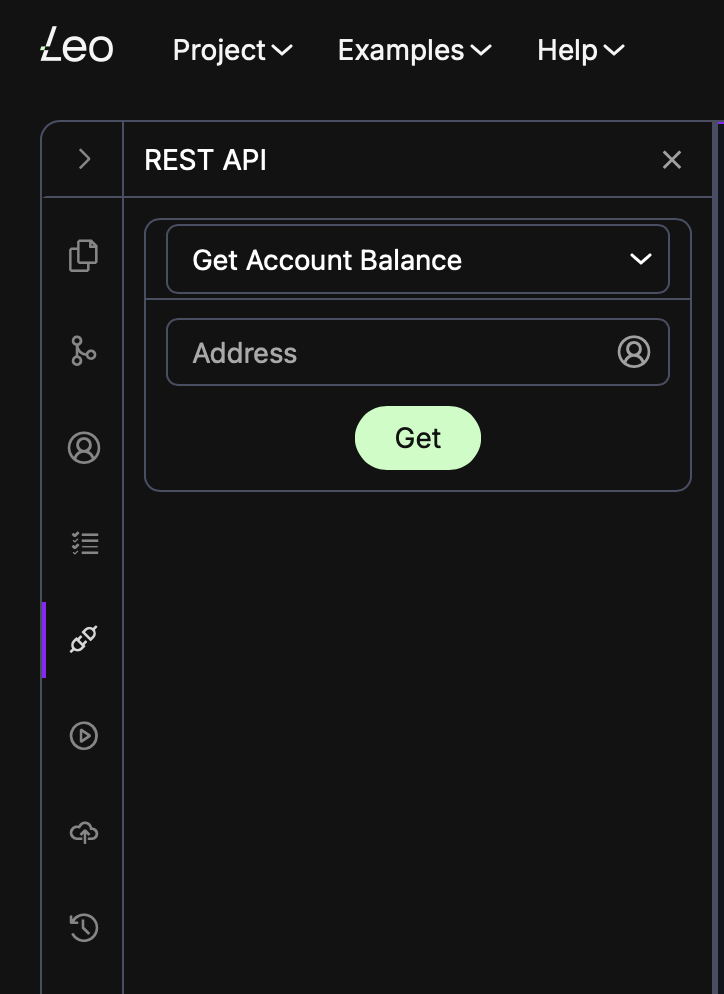
When the credits arrive, you should see the following output in the query widget after pressing Get.
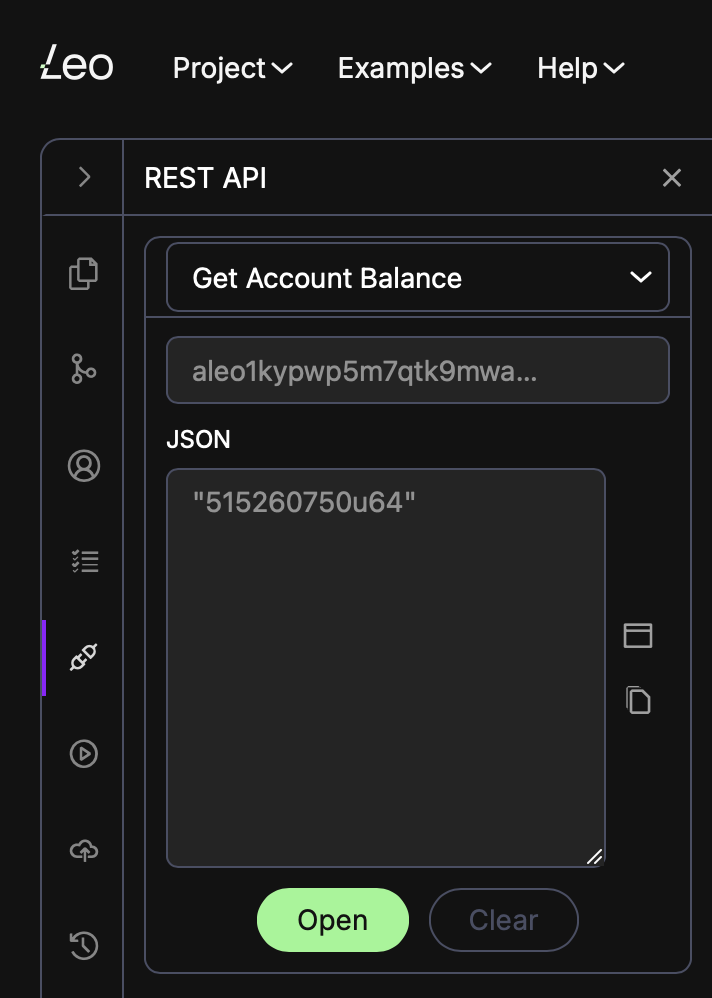
Alternatively you can search for the transaction ID provided by the faucets on any one of the ecosystem's block explorers.
While waiting for the credits to be sent to your wallet, you can proceed to the next step.
3. Deploy Your First Aleo program
3.1 The Token Program
In this section, you'll learn how to deploy a sample Token program to the Aleo Testnet from the Leo Playground.
By the end of this section you'll be familiar with how to deploy your own privacy preserving program to Aleo.
The Token program provides a simple example how to build a program with both public and private features by creating a
token that allows users to hold both public and private balances. This program will show you how to use encrypted data
structures called Records to represent private data and public on-chain datastores called mappings to represent public
data.
3.2 Customize the Name of Your Program
To begin deploying, select the Token program from the Examples dropdown menu on the Leo Playground.
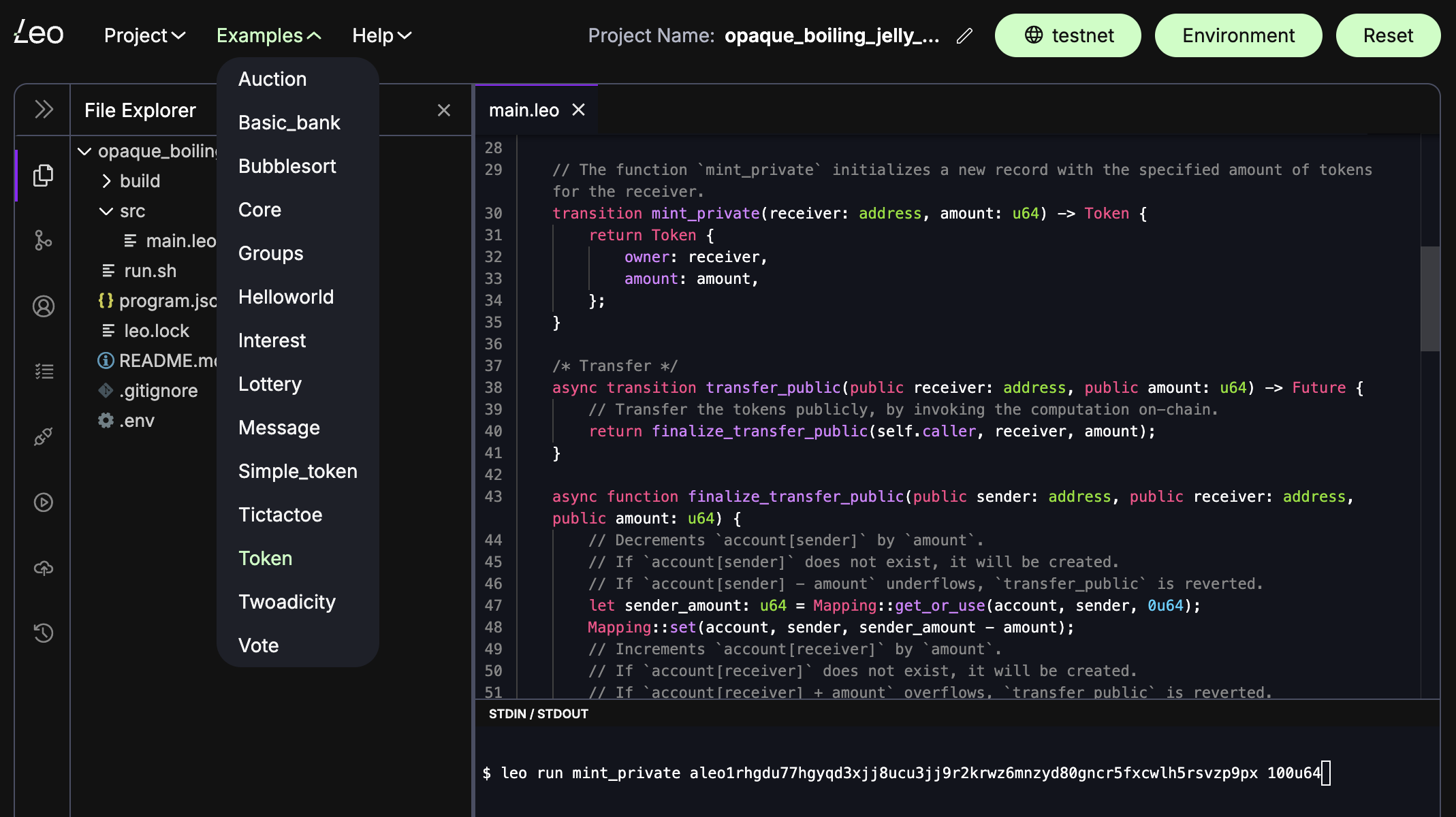
Next, customize the the name of the program in line 1 of src/main.leo to use a unique identifier and then update the
program field in the program.json file to match the new name.

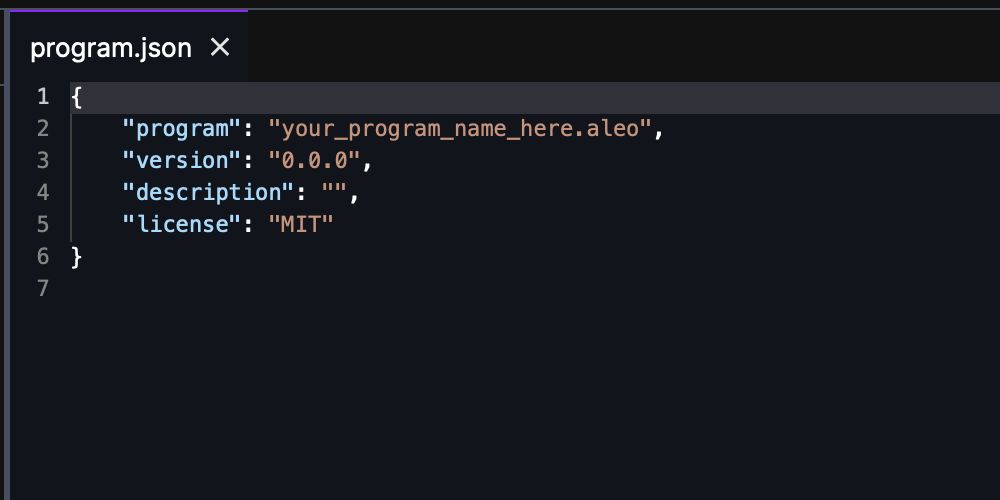
The length of the application name should be at least 10 characters. Deployment costs are higher for names shorter than 10 characters.
You are now ready to deploy your first Aleo program to the Testnet! Before proceeding, make sure that your account is funded with sufficient Testnet credits to deploy to the network.
3.3 Deploy Your Program to Testnet
Click on the deploy widget to bring up the deployment window. Enter your program name in the Program ID field and then
enter your Private Key. You can view an estimate for the deployment cost by clicking Estimate Fee. When you are
ready to deploy, click Deploy.
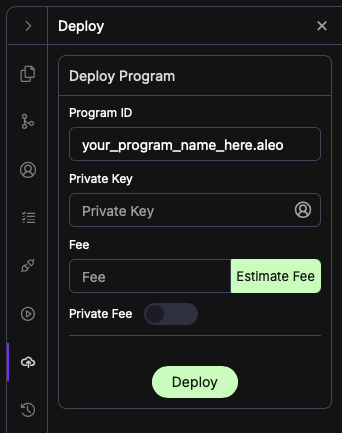
When you click Deploy, the Leo Playground will build a Deployment Transaction and submit to the Aleo Network.
This process may take a while. When it is finished, you should see a confirmation that your Aleo application was
deployed in a pop-up containing the transaction ID.
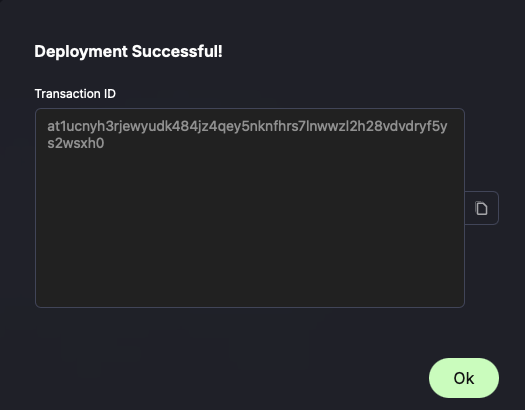
Copy the transaction ID to view the details of your deployment transaction on any of the Aleo block explorers:
Depending on the size of your program, you may not have sufficient credits to deploy your program if you are using an account funded with only one faucet transaction. If that's the case, you can still interact with a program already deployed to the Testnet.
4. Execute Public and Private Program Functions
You can now use your deployed token program by executing its functions!
If you did not have enough funds to deploy a program, you can use the token_quickstart.aleo program to test the execution of the token program methods.
4.1 Building Execution Transactions
When you call one of your program's functions, the logic is executed locally and a zero-knowledge proof is built. This proof attests to the correctness of the program execution and its corresponding outputs while keeping hidden inputs or outputs encrypted. After a function is executed, an Execution Transaction is submitted to the Aleo Network that contains a summary of the execution and a proof of its correctness. This transaction will be accepted when a network validator validates the proof and that the proper fee was paid.
4.2 Mint a Token Privately
Below we will mint a private token using the mint_private function. This function will create an Aleo Record which represents the new token. Records are encrypted data structures stored on-chain as ciphertexts that can only be decrypted by the owner of the record (using the owner's View key). This ensures that only the owner of the record knows its content, thus keeping the token private.
To mint a private token, navigate to the Execute widget in the Leo Playground and enter the name of your program in the Program ID tab. Alternatively, you can use the deployed token program 'token_quickstart.aleo`.
Click the magnifying glass icon to confirm that the Program ID corresponds to a deployed program.

Next, enter your Private Key and select the mint_private method from the Function drop-down menu. In the Inputs tab, enter your Account Address and a u64 integer.
["ALEO_ADDRESS_HERE", "50u64"]
Click Estimate Fee followed by Execute. As before with the deploy transaction, you can copy and past your transaction ID in a block explorer. You should see something resembling the following:
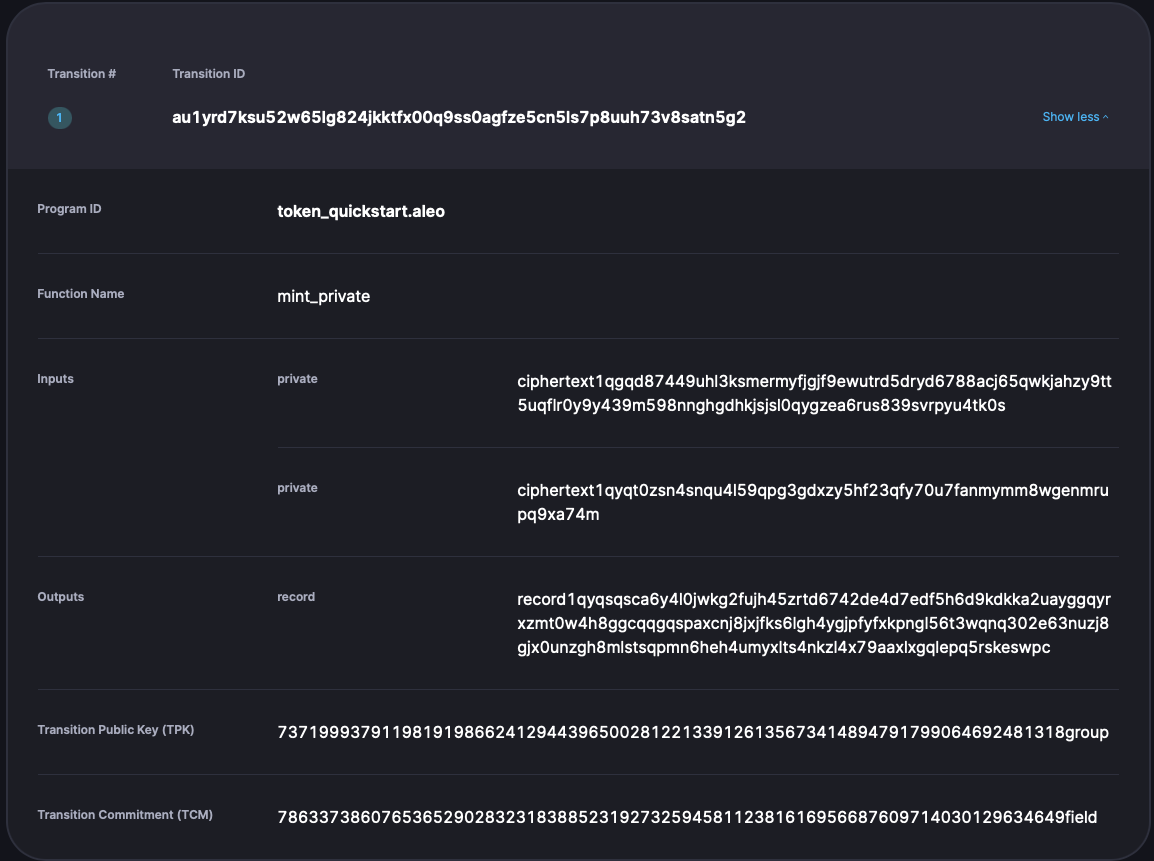
The output of the transaction is a Record. In order to decrypt the Record, you need to copy and past the ciphertext, navigate to the Records widget in the Leo Playground, enter the Record ciphertext along with the View Key that corresponds to your Account's Private Key, and click Decrypt. The decrypted Record should resemble the following:
{
owner: aleo1kypwp5m7qtk9mwazgcpg0tq8aal23mnrvwfvug65qgcg9xvsrqgspyjm6n.private,
amount: 50u64.private,
_nonce: 3175255370513411091535466147458245312227668453916963245036391157478647265587group.public
}
To learn more about Records, click here
4.3 Mint a Token Publicly
In the Token program, public balances are stored in program mappings. Mappings are public key-value stores on Aleo Network nodes which store long term persistent public state onchain.
Below we will mint a public token using the mint_public function. When this function is run, it will update the balance in the account mapping corresponding to the specified Aleo address.
Navigate back to the Execute widget and repeat the steps in the previous section for minting a public token. The transaction summary from the block explorer should resemble the following:
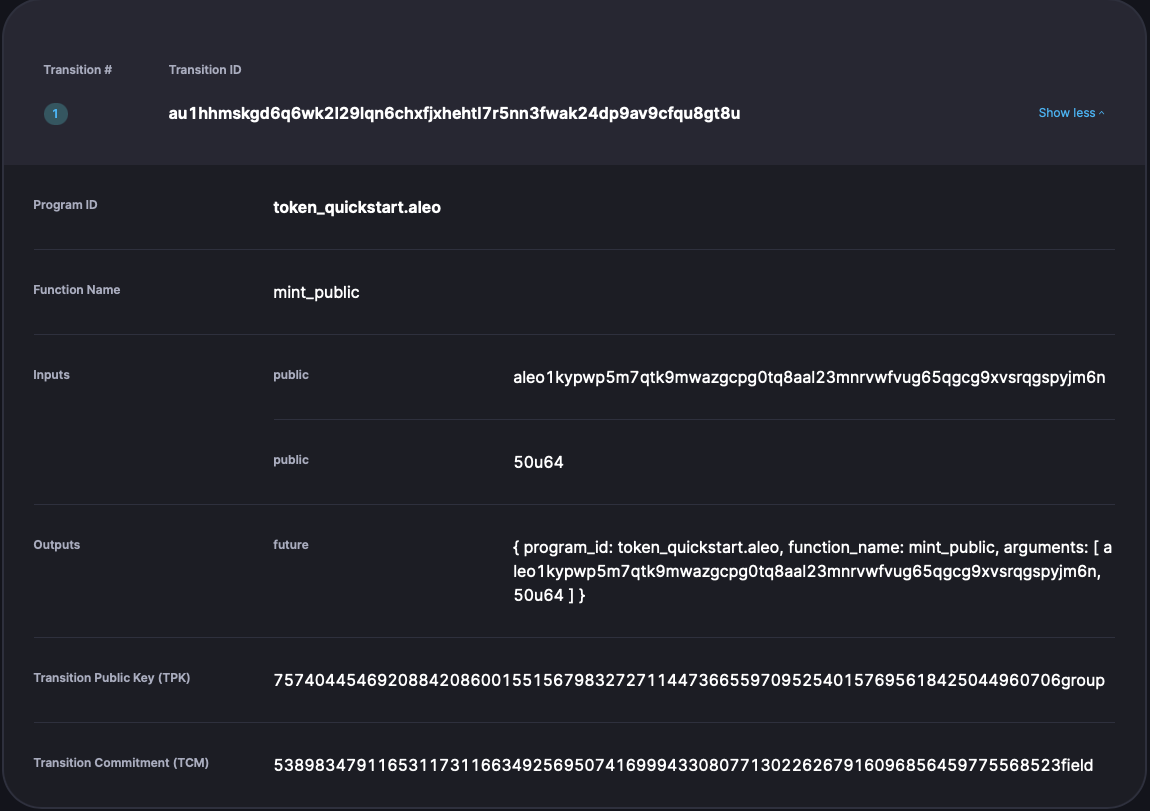
Unlike the mint_private function, the mint_public function creates an execution transaction that contains a Future instead of a Record. A Future contains a set of instructions for validators to execute on-chain which can read or update mappings. If the mint_public execution transaction is valid, it will be accepted by the validators which will run the instructions in the mint_public Future that update the account mapping.
Mapping values can be queried by selecting the Get Mapping Value By Key option in the query widget. You will need to enter the Program ID, mapping name, and mapping key in their respective fields. For the Token program, the mapping key is the Aleo address that owns the public tokens.
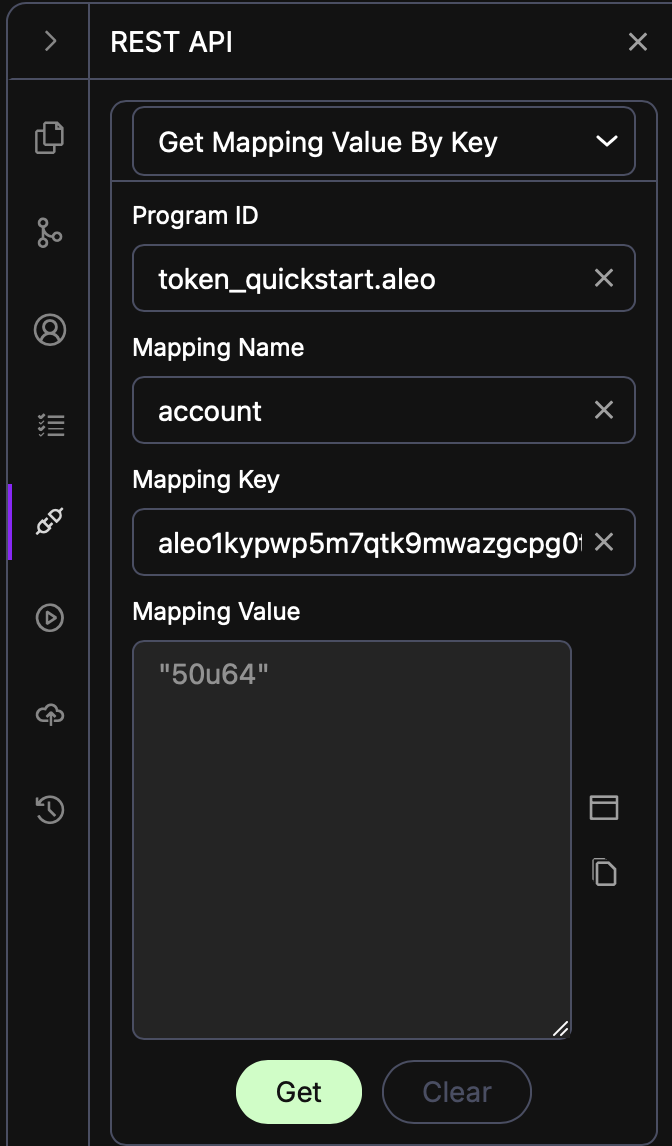
Awesome! You have successfully deployed a Leo program and executed transactions on the Testnet 🎉
To get started with local development, navigate to the installation guide to install the necessary tools to deploy your Leo programs locally.